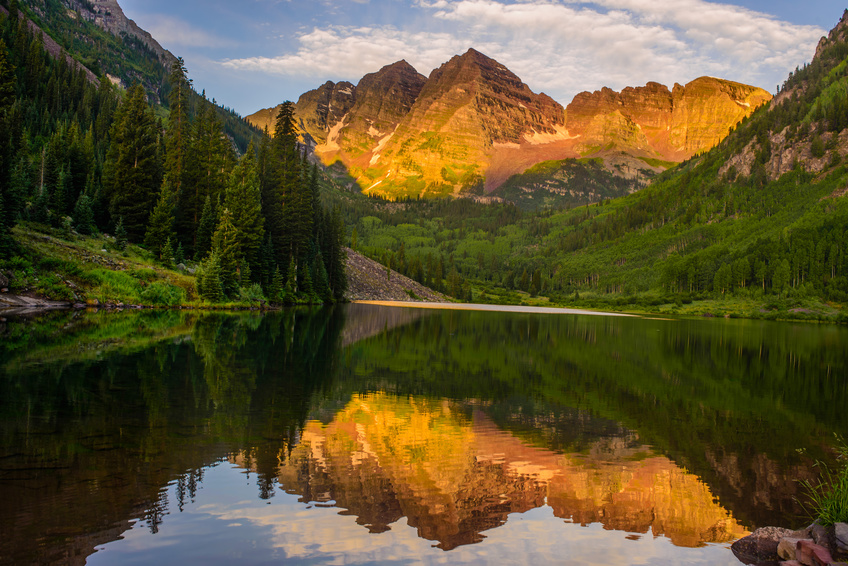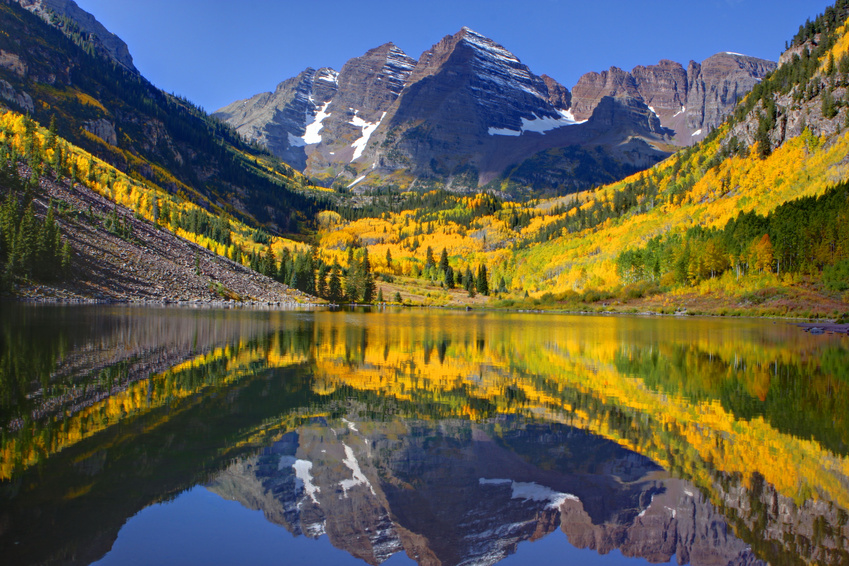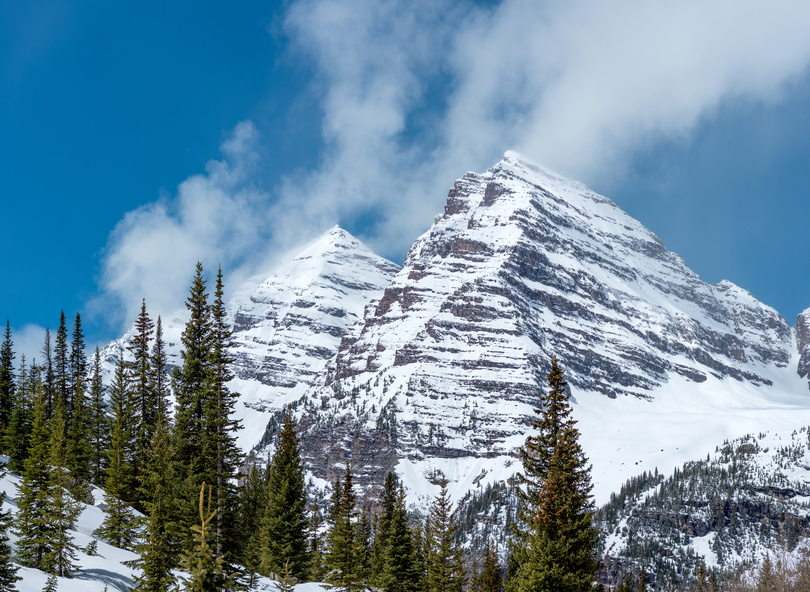Why would you come all the way to Aspen, and miss a visit to the Maroon Bells—North America’s most-photographed mountains? We think that seeing these 14,000-foot peaks in person is an absolute must.
While gazing at this majestic mountain landscape, you’ll soon want to do as photographer Ansel Adams once did, and snap your own photos of Maroon Peak and North Maroon Peak. So, prime your camera, and prepare for your upcoming visit with our ultimate guide to the Maroon Bells below.
QUICK FACTS
- Located in Elk Mountain Range in Maroon Bells-Snowmass Wilderness in White River National Forest
- North Maroon Peak summit at 14,012 feet
- Maroon Peak summit at 14,157 feet
How to get to the Maroon Bells year round
Because the Maroon Bells are a treasured part of America’s heritage, the US Forest Service restricts vehicular traffic during peak hours, but only during certain seasons. Find out how to get to the Maroon Bells in the summer, fall, winter, and spring.
SUMMER — BY VEHICLE

As mentioned above, the US Forest Service restricts car traffic to the Maroon Bells Recreation Area.(1) These restrictions take effect during the summer season. Though it is possible to drive to the Maroon Bells in your car before 8:00 AM and after 5:00 PM, we recommend taking the bus. If you drive into the Recreation Area, you’ll need to pay a $10 fee at the Forest Service entrance on Maroon Creek Road.
SUMMER — BY BUS
The bus service to the Maroon Bells begins in mid-June. Why do we recommend the bus? For a $6 roundtrip ticket, you not only have someone drive you to the Maroon Bells, which allows you to enjoy the incredible scenery, but you also get a talking tour.
The Maroon Bells bus drivers share the geological history of the area, and point out the Maroon Creek Valley’s annual natural phenomena, like avalanches. Plus, the driver may spot some wildlife that call the Recreation Area home; you’ll most likely see marmots sunning themselves on rocks just off the road!
Buying your ticket & catching the bus
You can catch the Maroon Bells bus from the Aspen Highlands bus stop, which is located on Boomerang Road at Aspen Highlands Village, about 3 miles from the Aspen Square Condominium Hotel in downtown Aspen. Before boarding, you’ll need to buy a bus ticket; and you can conveniently do so at the Highlands Center, which is the building directly in front of the bus stop. The Maroon Bells bus departs every 20 minutes.
FALL — BY VEHICLE & BY BUS

During the fall, the Forest Service restricts traffic through early October. If you drive your car, you’ll need to enter the Recreation Area before 8:00 AM or after 5:00 PM, and pay the $10 fee. The Maroon Bells bus usually runs until early October (see “Buying your ticket & catching the bus” above for details on how to ride the bus to the Maroon Bells).
WINTER — BY SNOWMOBILE

In winter, Maroon Creek Road is closed to vehicular traffic. The road usually closes in mid-November, and remains snow-packed through spring. If you want to see the Maroon Bells in winter, you can sign up for a snowmobile tour with T Lazy 7 Ranch. The Ranch is located right at the road closure, about 1.8 miles up Maroon Creek Road from Aspen Highlands Village. Tuesday through Saturday, T Lazy 7 offers 2-hour Maroon Bells tours three times a day—at 9:00AM, 11:30AM, and 2:30PM.
SPRING — BY BICYCLE

As in winter, Maroon Creek Road is closed to vehicular traffic in the springtime. The road usually re-opens in mid-May. With the road car-free, spring is the perfect time to ride your bike to the Maroon Bells. You can use the entire lane, and your ride will be fun, quiet, and serene.
(1) Exceptions to vehicle restrictions [from ACRA]
- Vehicles with a handicap sign, license plate, or pass.
- Vehicles with 11+ people ($3/person entrance fee applies).
- Vehicles with children 2 years old and younger.
- Campers staying at Silver Bar, Silver Bell, or Silver Queen Campgrounds.
- Persons with US Forest Service Special Use Permits.
- Vehicle with horse trailers.
- Overnight backpackers.
